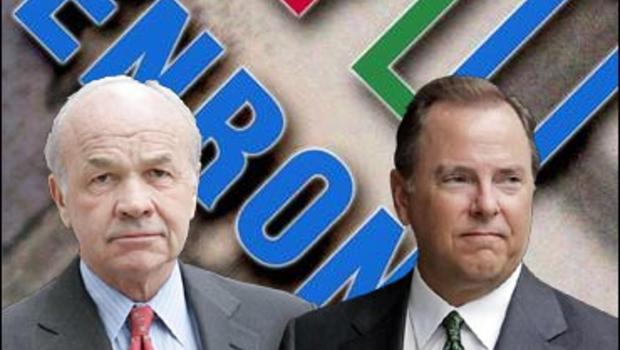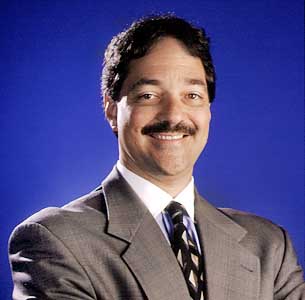 Week Eight of the corporate criminal case of the decade drew to a close on Thursday with former Enron treasurer and Andy Fastow acolyte Ben Glisan on the stand and with the Enron Task Force announcing that presentation of its case-in-chief was drawing to a close.
Week Eight of the corporate criminal case of the decade drew to a close on Thursday with former Enron treasurer and Andy Fastow acolyte Ben Glisan on the stand and with the Enron Task Force announcing that presentation of its case-in-chief was drawing to a close.
That’s entirely appropriate because, in many ways, Glisan’s testimony has been a microcosm of the Task Force’s case against former key Enron executives Ken Lay and Jeff Skilling.
During a heavily-scripted direct examination that took a little over a day, the Task Force had Glisan provide a 30,000 foot flyover of the various alleged misrepresentations that, somewhat surprisingly, mostly Lay and, to a lesser extent, Skilling made to the market and Enron employees about the company’s finances.
Then, during yesterday’s cross-examination, defense attorneys began to chip away systematically at Glisan’s allegations, focusing much more on the specific circumstances relating to Glisan’s allegations of wrongdoing than the prosecution did on direct. Much of the testimony on both direct and cross-examination pertained to dizzying analysis of the financial details of the Raptor financial structures that involved certain of Enron’s special purpose entities, a subject that clearly has become a snoozer for the jury and even the ever-patient Judge Lake, who continually encourages both sides to move things along.
Nevertheless, Glisan provided some of the most fascinating testimony to date in regard to the sledghammering manner that the Task Force has handled the biggest corporate criminal investigation in the United States since Rudy Guiliani’s prosecution of Drexel Burnham and Michael Milken almost 20 years ago.
First, as noted in this earlier post, Glisan disclosed that he had been successfully negotiating with Task Force prosecutors about a better prison deal almost from the beginning of his prison term in September 2003.
That important fact was not revealed to the court and the jury during Glisan’s key testimony in the earlier Enron-related Nigerian Barge trial in 2004 that resulted in four Merrill Lynch executives being sent to prison for the dubious “crime” of not sufficiently appreciating that Enron may not have accounted properly for an asset sale.
The Task Force had presented Glisan in the barge trial as a witness whose testimony was particularly credible because he had not cut any deal with the government in regard to his testimony and was being compelled to testify under a grant of immunity. That presentation of Glisan in the barge trial was disingenuous, at best.
Then, during cross-examination yesterday, Glisan revealed even more sordid details of his negotiations with the government.
Soon after Enron went into bankruptcy in early December, 2001, Glisan and his attorney went to prosecutors and the SEC and attempted to minimize his role at Enron while, at the same time, apparently hoping that prosecutors wouldn’t discover Glisan’s involvement in effectively embezzling about $1 million from Enron in connection with Fastow’s Southhampton deal.
When that approach didn’t work and Glisan was indicted in April, 2003, Glisan changed his story and began singing like a canary about alleged wrongdoing at Enron, but entered into a plea deal with the Task Force that did not include a cooperation agreement so that he could begin serving his five-year prison term immediately at a minimum security prison camp, the best alternative in the bad choices that a prisoner confronts in the federal prison system.
Despite Glisan’s turnabout, the Task Force apparently was still interested in extracting a better level of “cooperation” from Glisan. So, rather than sending him to the prison camp that the judge in Glisan’s case recommended and for which Glisan qualified, the Task Force apparently arranged with the Bureau of Prisons to send him to a harsher minimum-security prison facility, where Glisan was shockingly thrown into solitary confinement for most of his first two weeks in prison and then forced to share an 8 by 12 ft. prison cell with two other prisoners over most of the following month.
That had the intended effect on Glisan, who immediately began bartering his testimony in other Enron-related cases for the Task Force’s assistance in moving to the more-desirable prison camp and in lessening the length of his sentence. That led to arguably the most shocking revelation of all.
In February, 2004, the Task Force arranged to have Glisan brought to Houston so that he would be here during the time that Skilling was indicted. On the day after Skilling’s indictment, when the Task Force put Skilling through his “perp walk” before his initial court appearance, the Task Force had Glisan — in prison jump suit, leg shackles and handcuffs — meet Skilling and ride with him in the same federal courthouse elevator.
In one of the most dramatic exchanges of the trial, Skilling lawyer Daniel Petrocelli asked Glisan the following question about that incident:
“Did you believe for one second, sir, that [meeting Skilling in the elevator] was a coincidence?” asked Petrocelli.
“No, I didn’t believe that,” replied Glisan.
Although the Task Force’s transparent purpose in exposing the defeated Glisan to Skilling in this heavy-handed manner was to shock Skilling into seeking his own plea deal, the Task Force badly miscalculated the strength of Skilling’s backbone.
Glisan went on to testify on how he parlayed his testimony in the barge and Lay-Skilling trials into a Task Force-sponsored transfer to the more desirable mininum-security prison camp in Beaumont, liberal furloughs at home while working with the Task Force, and the Task Force’s facilitation of a reduction of his prison sentence by over year through his participation in an alcohol-rehab program.
As a result, Glisan — who entered prison in September 2003 to serve a five-year sentence — is scheduled to be released to home confinement in September of this year and will be released from custody entirely in January, 2007.
Not bad for a “non-cooperating” witness, eh?
What effect all of this is having on the Lay-Skilling jury remains decidedly unclear. I was in the courtroom for most of the direct examination of Glisan and it is clear that most the jurors now check out when the testimony turns toward the boring details of Enron’s complex financial transactions.
On the other hand, reports from courtroom observers from yesterday indicate that most jurors were listening intently during Glisan’s testimony about his solitary confinement and his arranged courthouse elevator meeting with Skilling.
My sense is that the Task Force has done a competent job of presenting a generally weak case that has some gaping holes, and that the jury is anxious to begin hearing Lay and Skilling’s side of the story.
So, at this point, it appears that Lay and Skilling will begin presenting their side of the case on Monday, April 3rd and that the defense’s case-in-chief will take about a month to six weeks to put on.
My bet is that it will be a vigorous and highly entertaining defense, so stay tuned as the corporate criminal case of the decade — and arguably the purest attempt to criminalize corporate agency costs in recent memory — turns toward home.
Like this:
Like Loading...
 Outside the media glare of the trial of the Lay-Skilling trial, decade, a true corporate crook — financier Martin Frankel — was re-sentenced yesterday in a post-Booker hearing to 17 years in prison for pulling off one of the biggest insurance frauds in American history.
Outside the media glare of the trial of the Lay-Skilling trial, decade, a true corporate crook — financier Martin Frankel — was re-sentenced yesterday in a post-Booker hearing to 17 years in prison for pulling off one of the biggest insurance frauds in American history.







